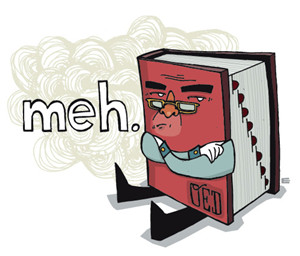(单词翻译:单击)

今天的《词汇大师》讨论的是英语口语中两大特色:linking and blending连读和合并。
连读一般有两种情况,一是将双词动词连在一起念,如shut up——shutup;二是原因开头的词通常会和前一个词连读。
合并,当一个词的尾音和一个词的首个音节相似时就会把两个词合在一起读。
AA: I'm Avi Arditti with Rosanne Skirble, and this week on Wordmaster — another lesson with Lida, our friend Lida Baker from the American Language Center at the University of California at Los Angeles. This time she explains two features of pronunciation that help create the sound of American English -- linking and blending.
BAKER: "Linking refers to the situation where you have a word that ends in a consonant and the next word starts with a vowel. And when that happens in English, we don't put any pause between the two words, but instead we link them or connect them so that they sound like one word. And a lot of times when this happens, it's in, for example, two-word verbs — where you have a verb followed by a preposition, so something like 'come over' becomes 'comeover.'"
RS: "Comeover to my house."
BAKER: "Right. There's a lot of examples I can give you that start with the word 'shut.' For example, 'shut up' becomes 'shutup.'"
RS: "Not very nice."
AA: "No."
BAKER: "Not very nice. 'Shut out' — 'shutout.'"
RS: "Keep someone away."
BAKER: "'Shut in' — 'shutin.'"
AA: "Someone who stays home all the time."
BAKER: "And what do we do when the water is running?"
AA: "Shut off."
BAKER: "'Shutoff,' right. So all of those are examples of words that end in consonants — the 't' sound — and the next word starts with a vowel. So we run them together and they sound like one word. Here's a great example where you have a whole sentence where one word ends in a consonant and the next one starts in a vowel: 'put it in a box.' Imagine how that sounds to a person who is learning English. They can read it: 'put-it-in-a-box.' But when we're talking fast, that's not how we say it, right? We say 'putitinabox.'"
RS: "It sounds like 'pudding in a box,' that you eat."
BAKER: "There you go, and it would be very confusing for someone learning English to try to tell those two things apart. Now, linking also occurs when you have words that end in vowels and the next word begins with a vowel. And in that case, we sometimes insert like a little 'y' sound or a little 'w' sound between them. So an example of that would be something like 'the end of.' That's what we would read. But we say 'thee-YEN-dov."
RS: "Thee-YEN-dov the year."
AA: "Thee-YEN-dov the book."
BAKER: "Right. And here are some phrases where there's a little 'w' sound between the two words: 'you are late.'"
RS: "You're late."
BAKER: "You can contract it and say 'you're' but you can also say 'yew-whar, yew-whar, yew-whaaar.' Hear that 'w'?"
AA: "Uh-huh."
BAKER: "Or 'show-wus, show-wus.' Or 'how-whar you?' It's actually not that hard for people to understand this second case of linking between vowels, but it's the consonant-to-vowel situation where sometimes it's very hard to tell where one word starts and the other word ends.
"Now, blending means that when you have a word that ends in a sound and the next word starts with the very same sound — and then it's again very hard to tell where one word ends and the next one starts. So, for example, 'bad day,' 'badday.' 'June ninth, Juneninth,' 'hot tea, hottea.' And then there are some very common ones like 'phone number,' 'left turn,' 'orangejuice.' What do you think that is?"
RS: "Orange juice."
BAKER: "Right, very hard to separate the two words. And you know you can tell how normal it is when you hear it done unnaturally. I went to a choir rehearsal to hear this big professional choir rehearsing. They were working on 'America the Beautiful.' And the director told them to put a little separation between every word. So what came out was something like this: 'Oh beautiful-uh for spacious-uh skies-uh.' You see how unnatural that sounds?"
RS: "But you're saying it. When you sing it, it sounds a lot different."
AA: "How did it sound when they sang it?"
BAKER: "He told them to sing it that way, because he wanted the audience to be able to make out every word. So he had them over-enunciate on purpose."
AA: "Did it sound OK?"
BAKER: "Well, it made it very easy when they were singing to understand the words, yes. But you would never talk that way. You would say: 'Oh beautiful, for spacious skies, for amber waves of grain,' not 'for amber-uh waves-uh of grain-uh.'"
AA: Author and English teacher Lida Baker suggests one way to learn the differences between written and spoken American English is through the Internet — by listening and reading along with radio scripts. You'll find our programs at voanews.com/wordmaster, and our e-mail address is word@voanews.com. With Rosanne Skirble, I'm Avi Arditti.


